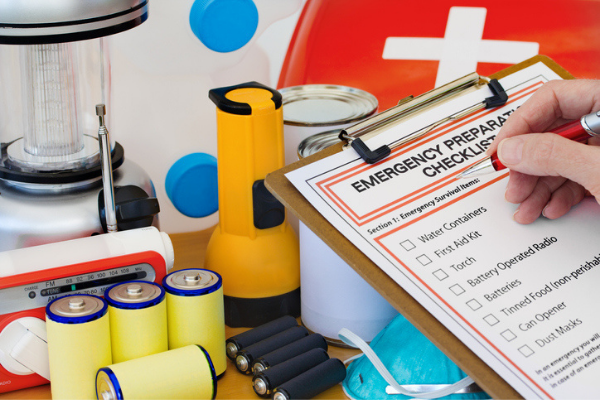By: Frankie Wood-Black, ACS Safety Expert

Sixteen years ago, hurricanes Katrina and Rita forced many of us to rethink preparedness. Whether or not you were involved in your company’s preparedness planning, the events of that summer had most of us thinking about how we would respond. Did you still need that land-line telephone? What supplies do you need to keep? What do you put in a go-bag?
For the next couple of years, individuals and companies made changes, but things returned to the status quo, albeit a different status quo. However, the past couple of years and this summer have us facing the question once again. How to prepare for the inevitable emergency? While the crisis that one must prepare for is different, it could be a wildfire, hurricane, contagion, a massive downpour, or a cyber-ware attack, preplanning is essential, and everyone’s situation is different.
The Federal Emergency Management Agency, FEMA, has a website dedicated to getting ready, ready.gov. Emergency planning starts with the alert. How are you notified of a situation? How we get our news now is significantly different. Yes, there are push alerts to your cellular telephone, but what if you are in a different location? Or, your family members are in different locations? Are you getting the warnings in time? Once the warning or alert has been received, what next?
This is where preplanning is essential. What are the critical needs? If it is your business, laboratory, or plant, how do you make it safe? What is your plan for backup power? Backup documents? Critical staffing plans? Emergency supplies? If it is your home, what are the needs of the family members, for example, medical conditions, dietary issues, personal hygiene items? Do you have an evacuation or escape plan? Where are you going to go? Do you have pets? And, critically, what documents are you going to need?
Preplanning will not address all the issues that a given emergency will present. However, preplanning will help to identify specific vulnerabilities. It helps organizations and individuals prepare and establish contingency plans and aids in recovery. For example, if you preplan, you may have copies of key documents located in a place outside of the emergency area. You have supplies which will allow you to survive 72-hours without access to outside resources. You have backup power generation to safe equipment or operate critical infrastructure (and have located that equipment outside of danger zones, e.g., the diesel generator is not in a basement prone to flooding).
Unfortunately, the days when having extra batteries for a flashlight, or candles with a transistor radio was an adequate emergency plan are gone. One has to prepare for more complex emergencies. One has to pre-think evacuate routes, have communication plans, consider where and how key documents are maintained, and even how one will find out about the emergency. Hopefully, as you read this, you haven’t had to recently implement your plan due to wildfire, storm, or ransomware attack, and can take a bit of time to think through how you might prepare before you have to implement your plan.
This article has been edited for length and clarity. The opinions expressed in this article are the author's own and do not necessarily reflect the view of their employer or the American Chemical Society.
Copyright 2022 American Chemical Society (All Rights Reserved)




